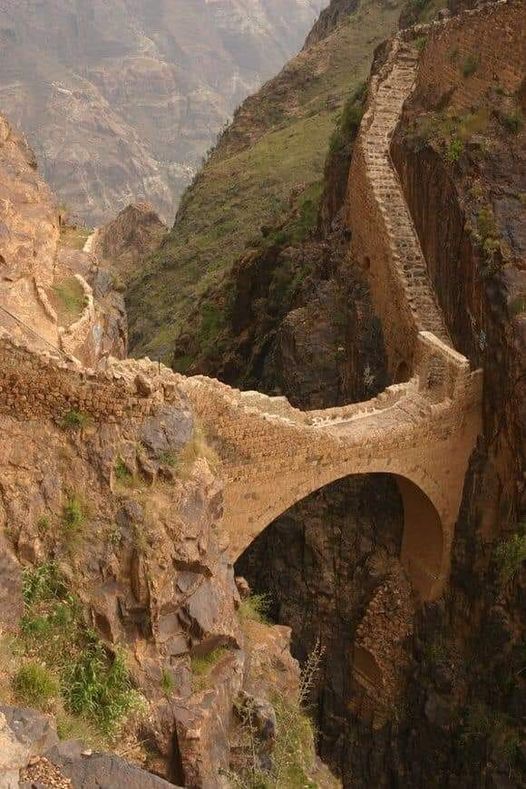Introduction
Nestled deep within the rugged Ahnum Mountain Range of northwestern Yemen lies a remarkable architectural wonder – the Shaharah Bridge. Constructed in the 17th century CE, this ancient stone bridge may appear unassuming at first glance, but it holds a captivating history and impressive feats of engineering that have withstood the test of time.
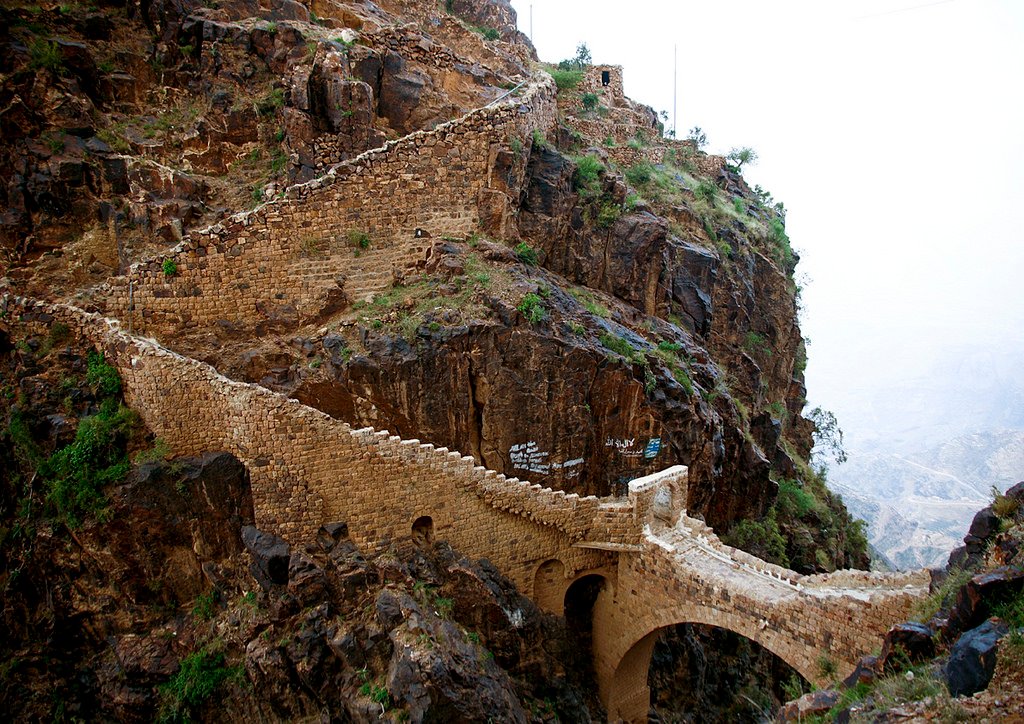
Stretching across a 300-foot-deep gorge between the mountains of Jabal al Emir and Jabal al Faish, the Shaharah Bridge is a testament to the ingenuity and resilience of the Yemeni people. At just 65 feet long and 9 feet wide, this modest structure has played a crucial role in the lives of the neighboring villagers for centuries, serving as a vital connection between their communities.
But the Shaharah Bridge is more than just a practical crossing – it is also a structure imbued with fascinating stories and strategic design choices that have captivated the imaginations of adventurous travelers and historians alike. From its purposeful vulnerability to potential invaders to its ingenious solution to an age-old problem, this bridge’s remarkable history is worthy of exploration.
The Strategic Design of Shaharah Bridge
One of the most intriguing aspects of the Shaharah Bridge is its strategic design, which was intentionally crafted to serve as a safeguard against potential invasion. During the 17th century, when the bridge was constructed, Yemen was a frequent target of the Ottoman Turks, who sought to expand their empire and control the valuable trade routes that passed through the region.
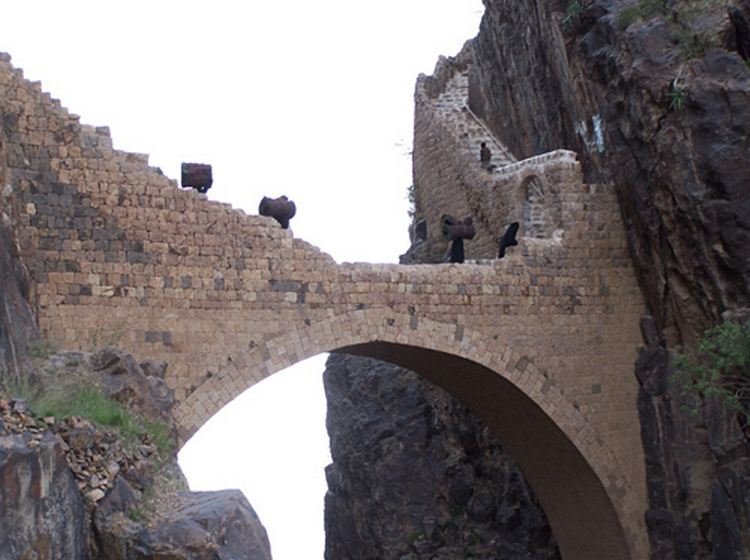
To thwart any such attempts, the builders of the Shaharah Bridge devised a clever solution – they designed the structure to be easily dismantled in a matter of minutes. This ingenious feature meant that if the Turks ever tried to cross the bridge, the Yemeni defenders could quickly dismantle it, effectively cutting off the invaders’ access and leaving them stranded on the wrong side of the gorge.
This strategic design was not only a testament to the engineering prowess of the Yemeni people but also a reflection of their determination to defend their homeland against foreign aggression. By creating a bridge that could be easily destroyed, the builders of Shaharah ensured that the local population would maintain control over this vital crossing, even in the face of a powerful enemy.
Solving an Age-Old Problem
In addition to its strategic importance, the Shaharah Bridge also solved an age-old problem that had long plagued the people of the Ahnum Mountains – the challenge of traversing the deep, rugged gorges that divided their communities.
Prior to the construction of the bridge, the only way for the villagers to cross these treacherous chasms was by using a series of rickety, dangerous rope bridges. These makeshift structures were often unstable and prone to collapse, putting the lives of those who dared to use them at great risk.
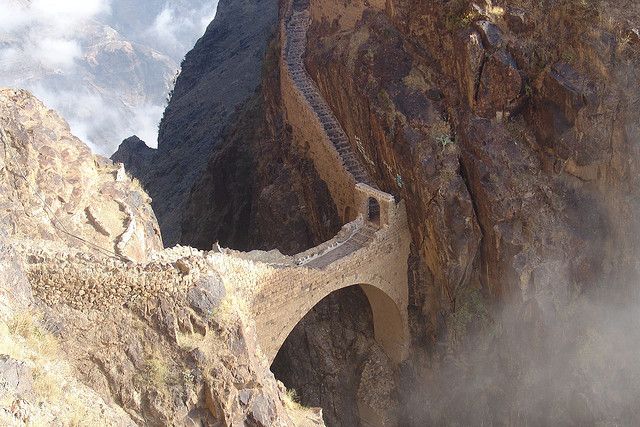
The Shaharah Bridge, however, provided a much more reliable and secure solution. By spanning the 300-foot-deep gorge with a sturdy stone structure, the bridge allowed the villagers to safely and easily cross between the two mountain peaks, connecting their communities and facilitating the exchange of goods, services, and ideas.
This practical function of the Shaharah Bridge cannot be overstated. For the people of the Ahnum Mountains, this bridge was a lifeline, enabling them to maintain vital social and economic connections that were essential to their way of life. It was a testament to the ingenuity and problem-solving skills of the Yemeni people, who were able to overcome the challenges posed by the rugged terrain and create a lasting solution that has continued to serve their communities for centuries.
The Architectural Marvels of Shaharah Bridge
The Shaharah Bridge is not only a strategic and practical marvel but also a remarkable feat of architecture and engineering. Constructed primarily from limestone, a readily available material in the Ahnum Mountains, the bridge’s design is a testament to the skill and craftsmanship of its builders.
Despite its relatively modest dimensions – just 65 feet long and 9 feet wide – the Shaharah Bridge has managed to withstand the ravages of time and the elements, standing strong for over 300 years. This is a testament to the structural integrity of the bridge’s design, which has enabled it to endure the harsh conditions of the Yemeni climate, including heavy rains, strong winds, and the occasional tremor.
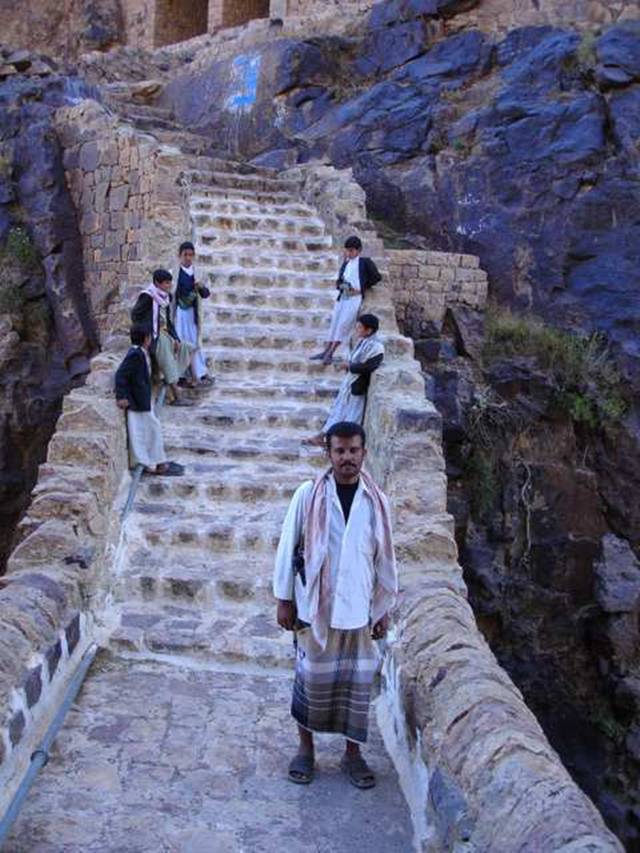
One of the most impressive aspects of the Shaharah Bridge’s architecture is its ability to seamlessly integrate with the natural landscape. The bridge’s limestone construction blends seamlessly with the surrounding rock formations, creating a harmonious and visually striking structure that appears to be a natural extension of the mountains themselves.
This careful attention to the bridge’s aesthetic integration with its environment is not merely a matter of artistic expression but also a practical consideration. By designing the Shaharah Bridge to complement the rugged terrain, the builders ensured that it would not only be visually appealing but also less susceptible to the elements that could potentially compromise its structural integrity.
The Enduring Legacy of Shaharah Bridge
Despite the challenges and upheavals that have plagued Yemen in recent years, the Shaharah Bridge has endured as a symbol of the resilience and ingenuity of the Yemeni people. Even as the country has been engulfed in civil war, the bridge has continued to serve as a vital connection for the neighboring communities, providing a safe and reliable means of traversing the treacherous gorge that separates them.

In the years before the conflict, the Shaharah Bridge had become a popular tourist attraction, drawing adventurous travelers from around the world who were captivated by its stunning natural setting and remarkable history. The bridge’s moniker, the “Bridge of Sighs,” aptly captured the sense of awe and wonder that it inspired in those who witnessed its magnificent span.
Today, the Shaharah Bridge remains a testament to the enduring spirit of the Yemeni people, a reminder of the incredible feats of engineering and problem-solving that they have accomplished in the face of adversity. As the country continues to grapple with the challenges of war and instability, the bridge stands as a symbol of hope and resilience, a reminder that even in the face of overwhelming odds, the ingenuity and determination of the human spirit can prevail.
Conclusion
The Shaharah Bridge in Yemen is a remarkable and captivating structure that embodies the rich history, engineering prowess, and resilience of the Yemeni people. From its strategic design that allowed it to be quickly dismantled to thwart potential invaders to its ingenious solution to the age-old problem of traversing the rugged Ahnum Mountains, this bridge is a testament to the ingenuity and problem-solving skills of its builders.
As the world continues to grapple with the challenges of the modern era, the Shaharah Bridge serves as a powerful reminder of the enduring human spirit and the remarkable feats that can be achieved through creativity, determination, and a deep connection to one’s cultural heritage. Whether you are a historian, an architect, or simply an adventurous traveler, the Shaharah Bridge is a must-see destination that will leave you in awe of the incredible accomplishments of the Yemeni people.
